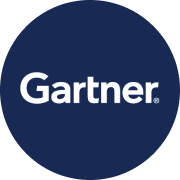
Revenue for Sales Enablement & Training
Turn Every Conversation Into a Coaching Moment
With Revenue.io, Enablement leaders get a platform built for scalable, measurable training.
Reps move from one-time onboarding to continuous, AI-powered coaching that reinforces skills, shortens ramp time, and improves performance across every team.
1024
Increase in Rep Coaching Requests
100%
Calls Scored by Sales Methodology
60%
Reduction in Rep Ramp Time
Why Enablement Leaders Choose Revenue.io
Training is hard to scale, and without visibility into real conversations, it’s impossible to know what’s working
Revenue.io connects coaching, conversation insights, and performance data in one platform. Enablement teams can reinforce learning in real time, ensure methodology adherence, and prove the impact of training across the entire sales organization.
Powering the World’s Leading Revenue Organizations on Salesforce with Revenue.io
Continuous Coaching Built on Every Sales Conversation
SCALABLE COACHING
Explore AI sales coaching
Consistent Execution Built on Proven Sales Frameworks
METHODOLOGY ADOPTION
Explore generative scorecards
Training ROI Built on Real Performance Data
MEASURABLE IMPACT
Salesforce advantage
See a 2-minute Revenue.io Demo in Action
Why Enablement Teams Choose Revenue
 RevOps Director
RevOps Director

Erin Kerr
Revenue Operations @ Freshbooks
“Revenue.io gives us scalable insights into what’s actually happening in our conversations, so we can improve playbooks and reinforce top-performer behaviors.”
 Enablement Director
Enablement Director

Magda P.
Director of International Customer Onboarding @ HireRight
“The Revenue.io platform ensures every interaction is optimized, reducing ramp time for new reps and increasing win rates.”
 Senior Enablement
Senior Enablement

Chris Casa
Senior Manager of Sales Enablement @ Equity Trust
“It would’ve taken 90 days for our sales team to audit calls on their own. With Conversation AI, it only took us a day to get the data we needed.”



Trusted by Leading Revenue Teams
Top-rated across all major platforms, Revenue.io delivers proven results for revenue organizations worldwide.
 ✓
✓ ✓
✓ ✓
✓ ✓
✓ ✓
✓ ✓
✓Enterprise-Grade Security & Compliance
Industry-leading compliance and safeguards. Keep your data protected and your team compliant with HIPAA, TCPA, GDPR, CCPA, CPRA, and SOC 2.